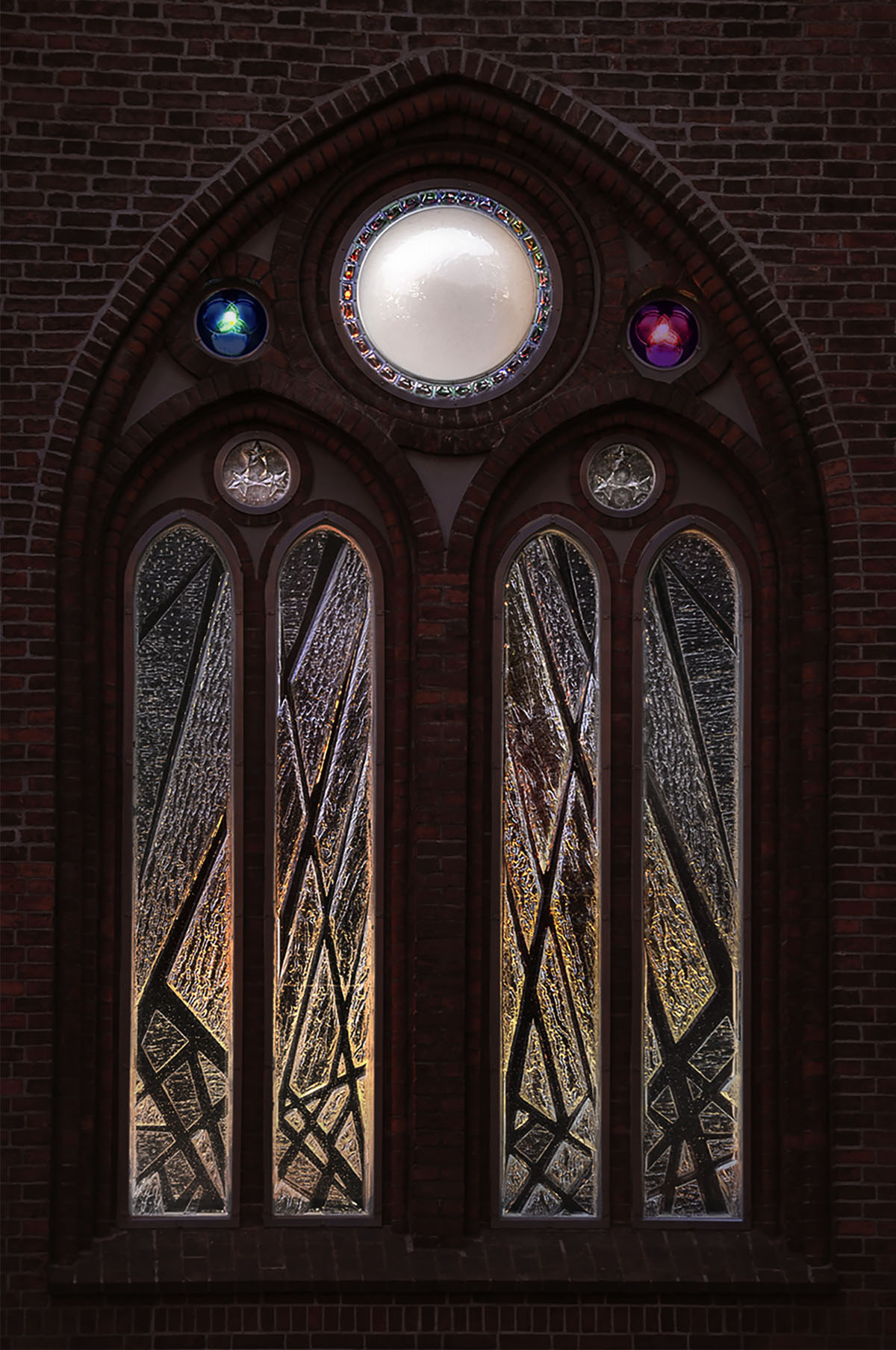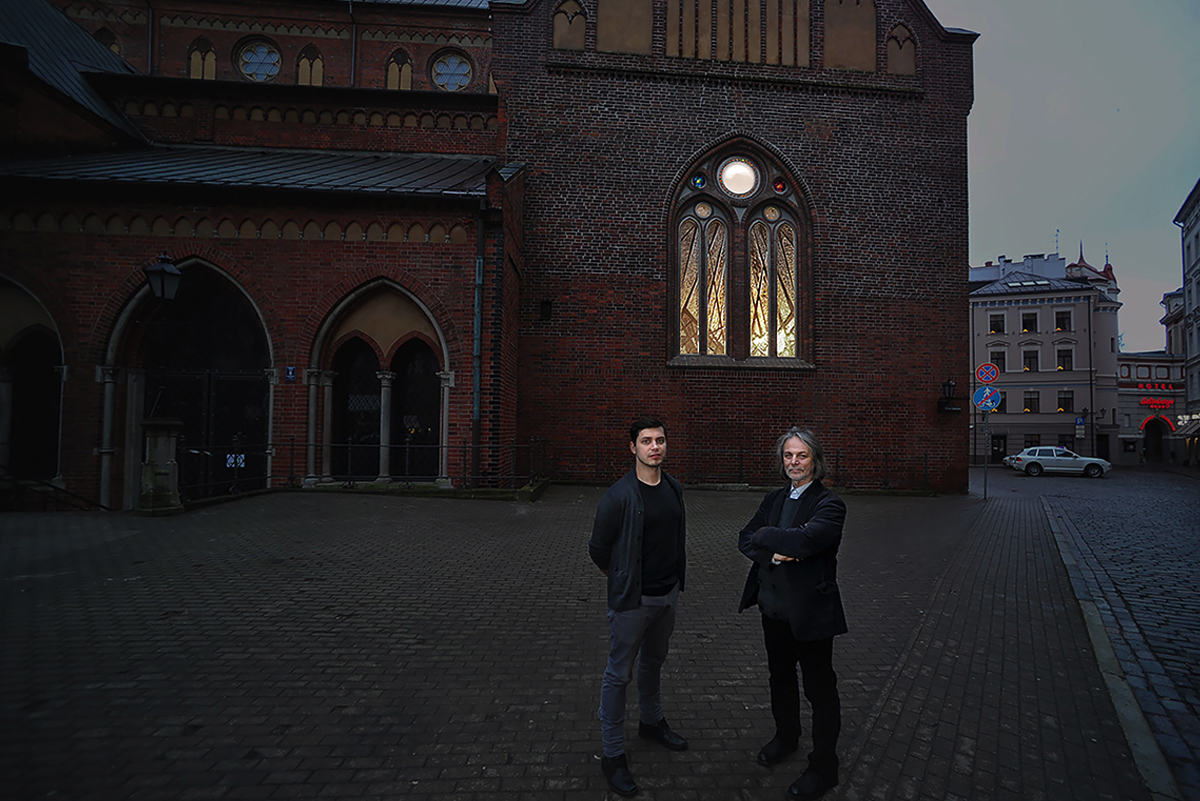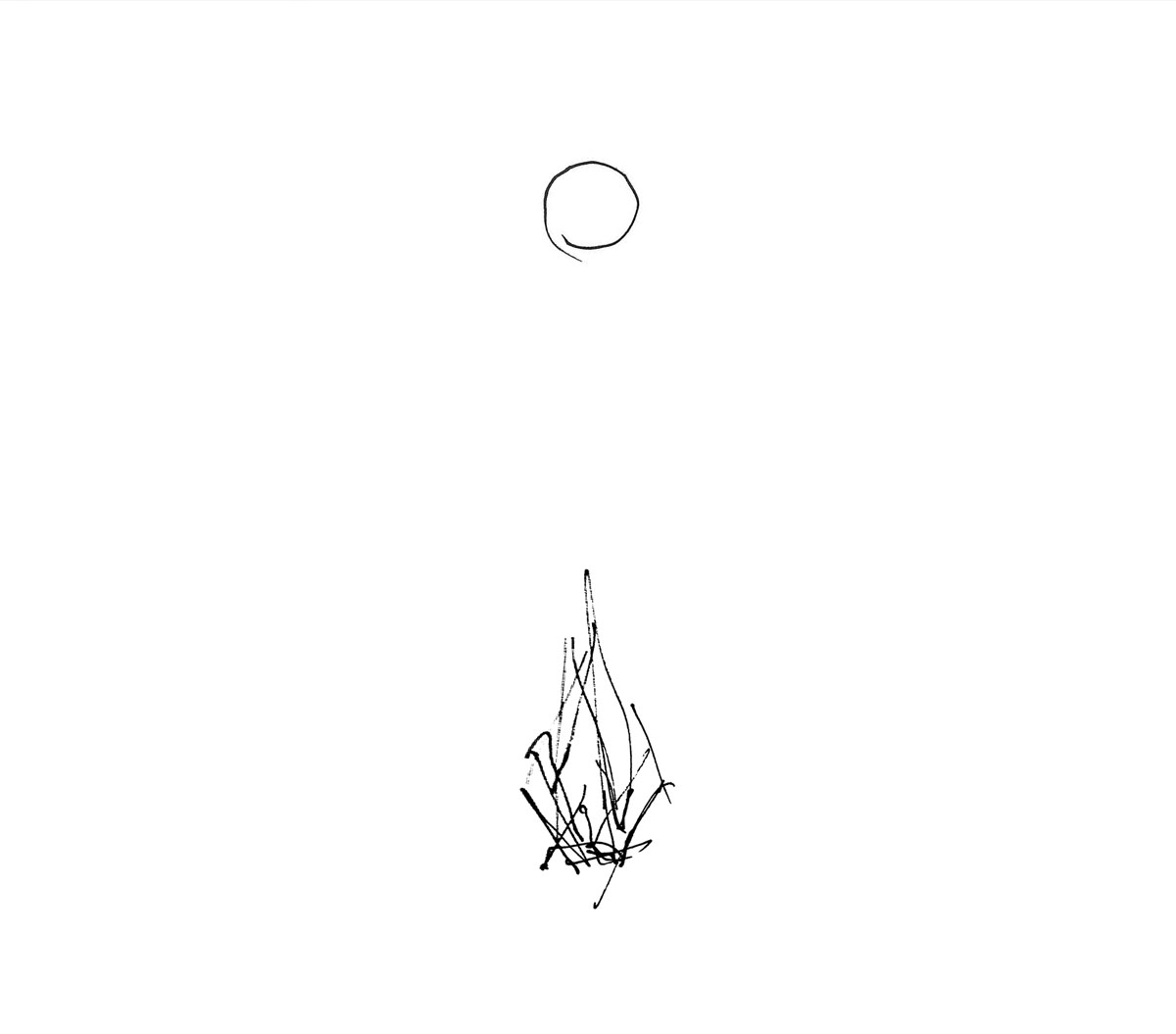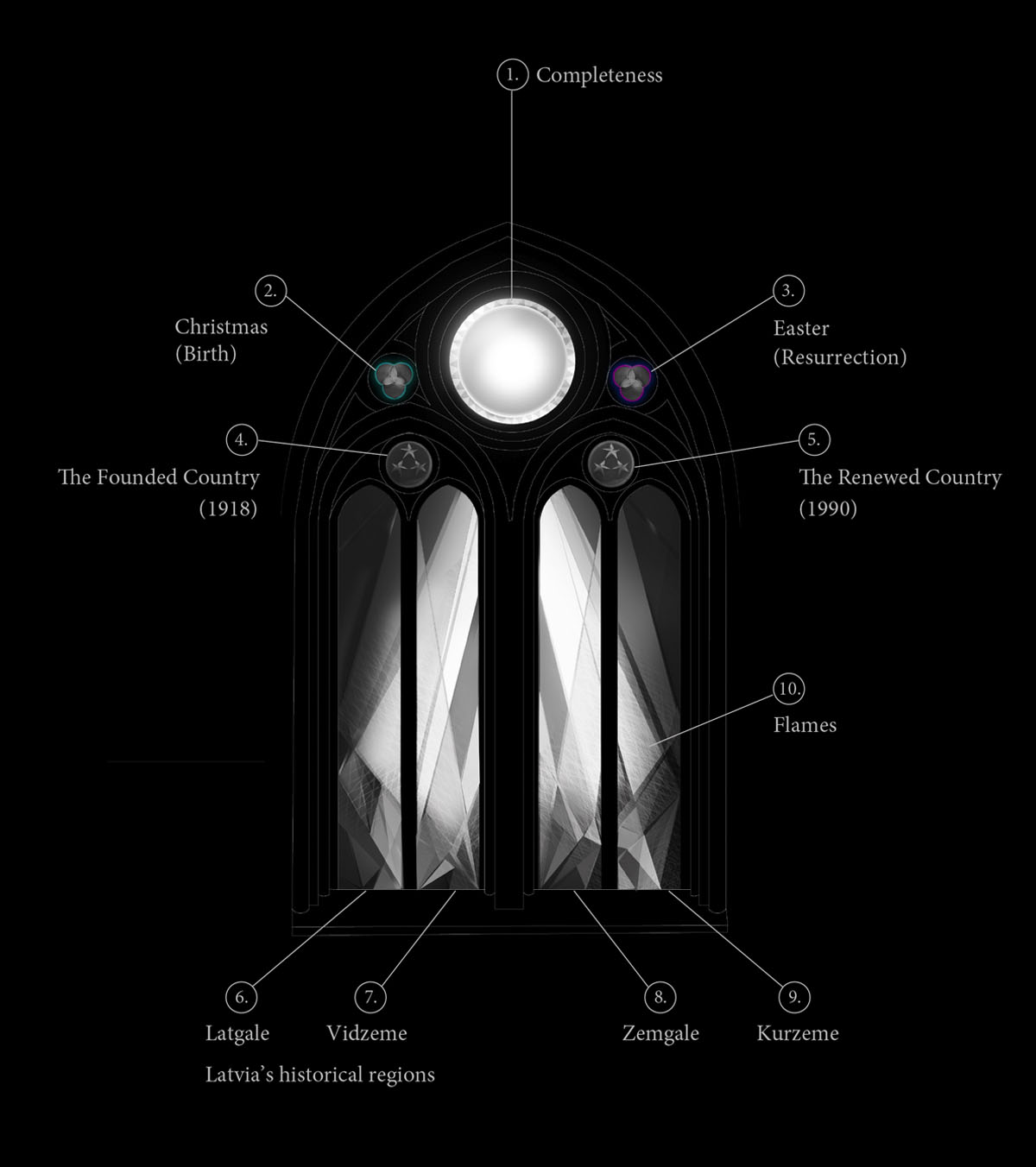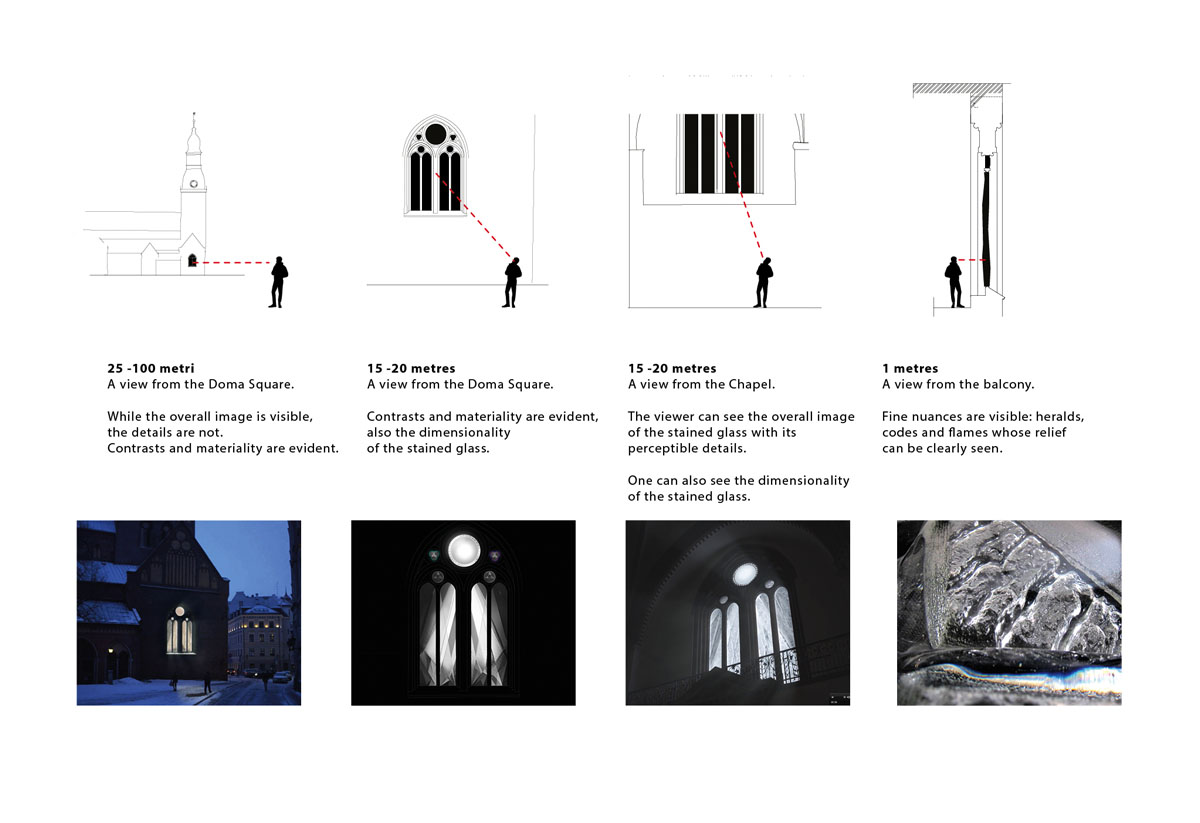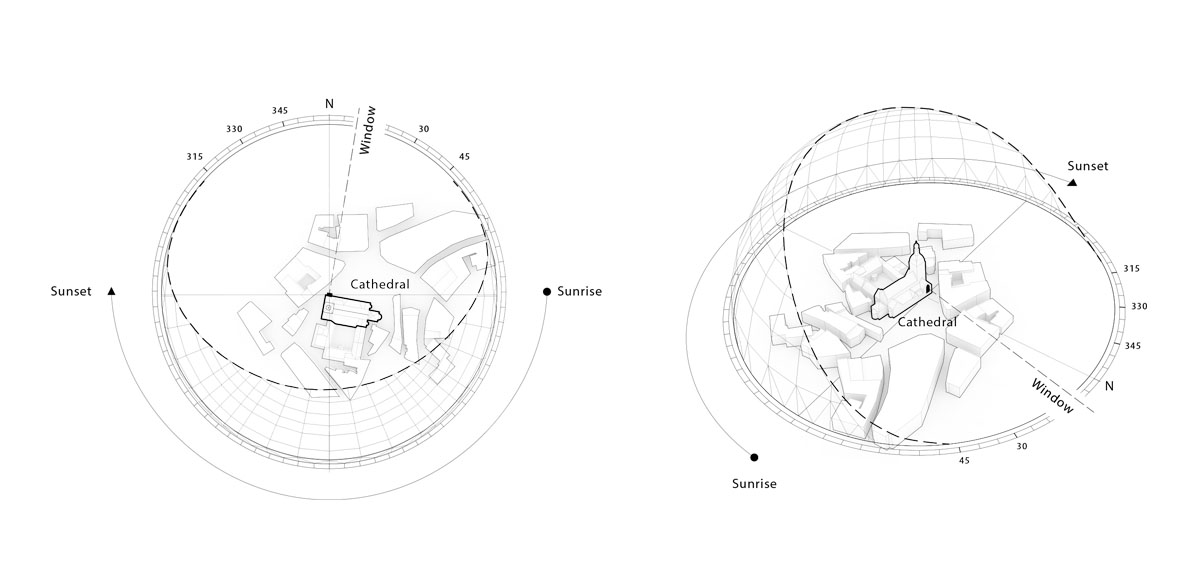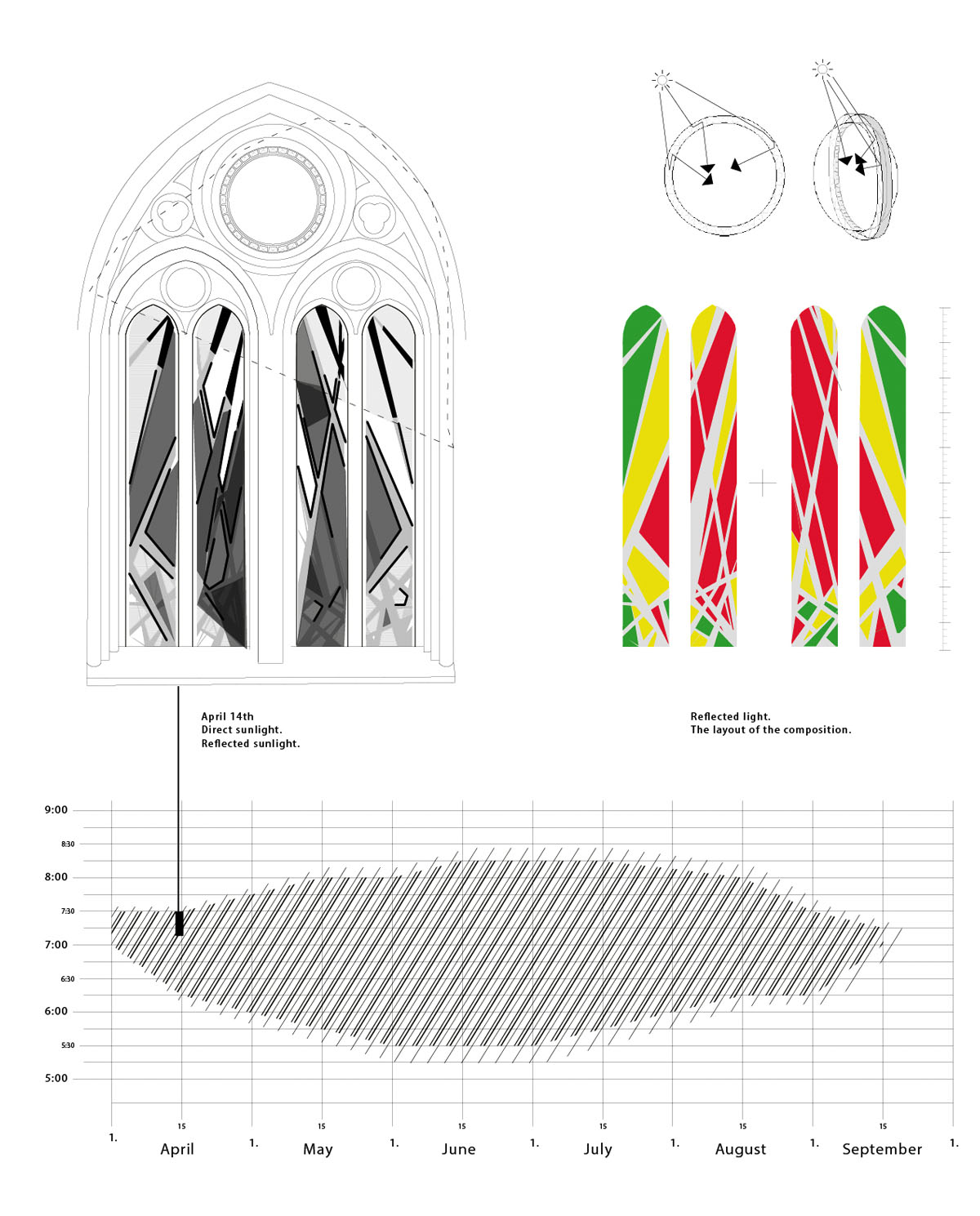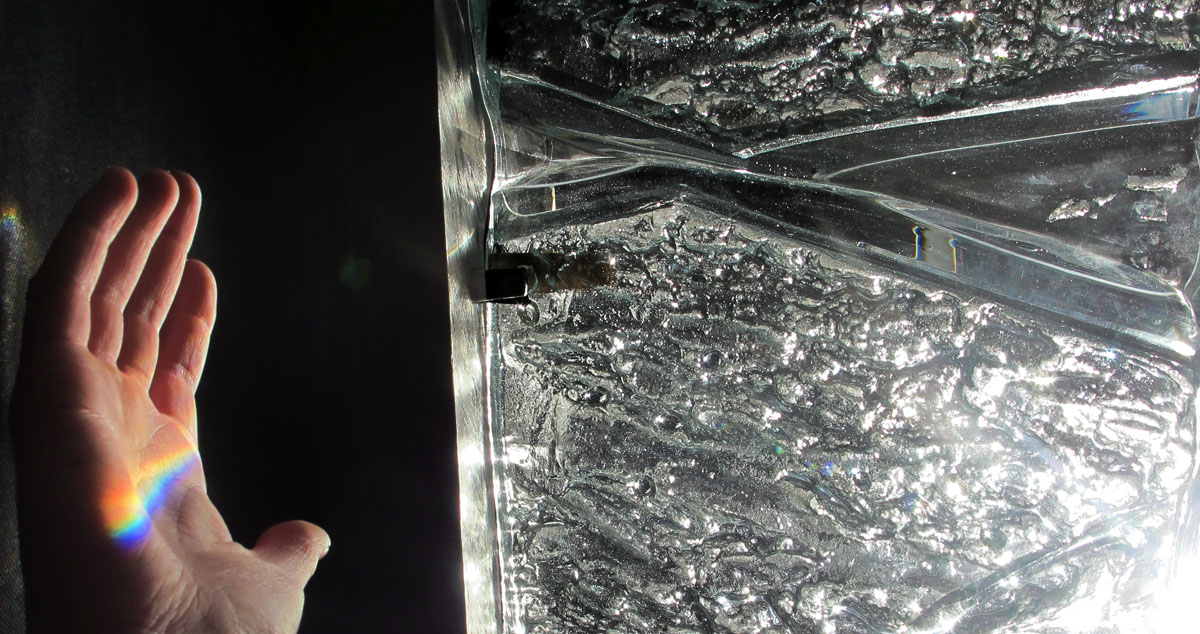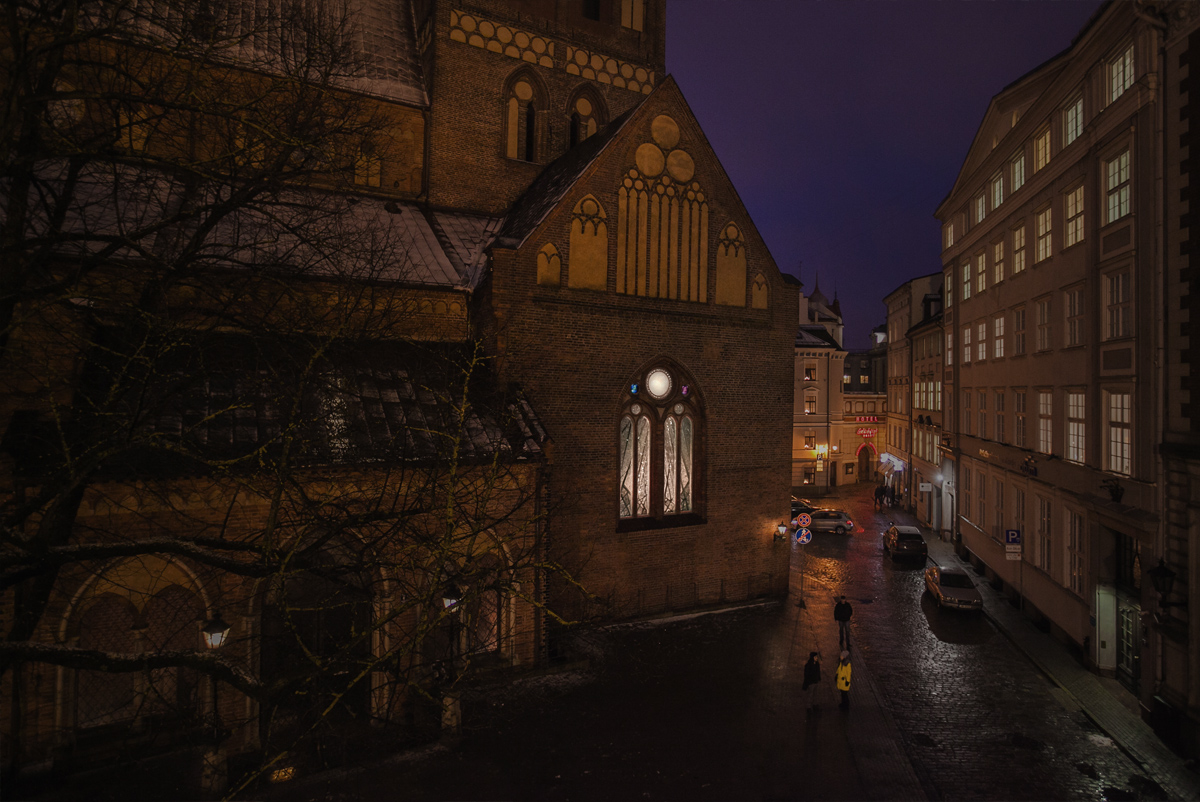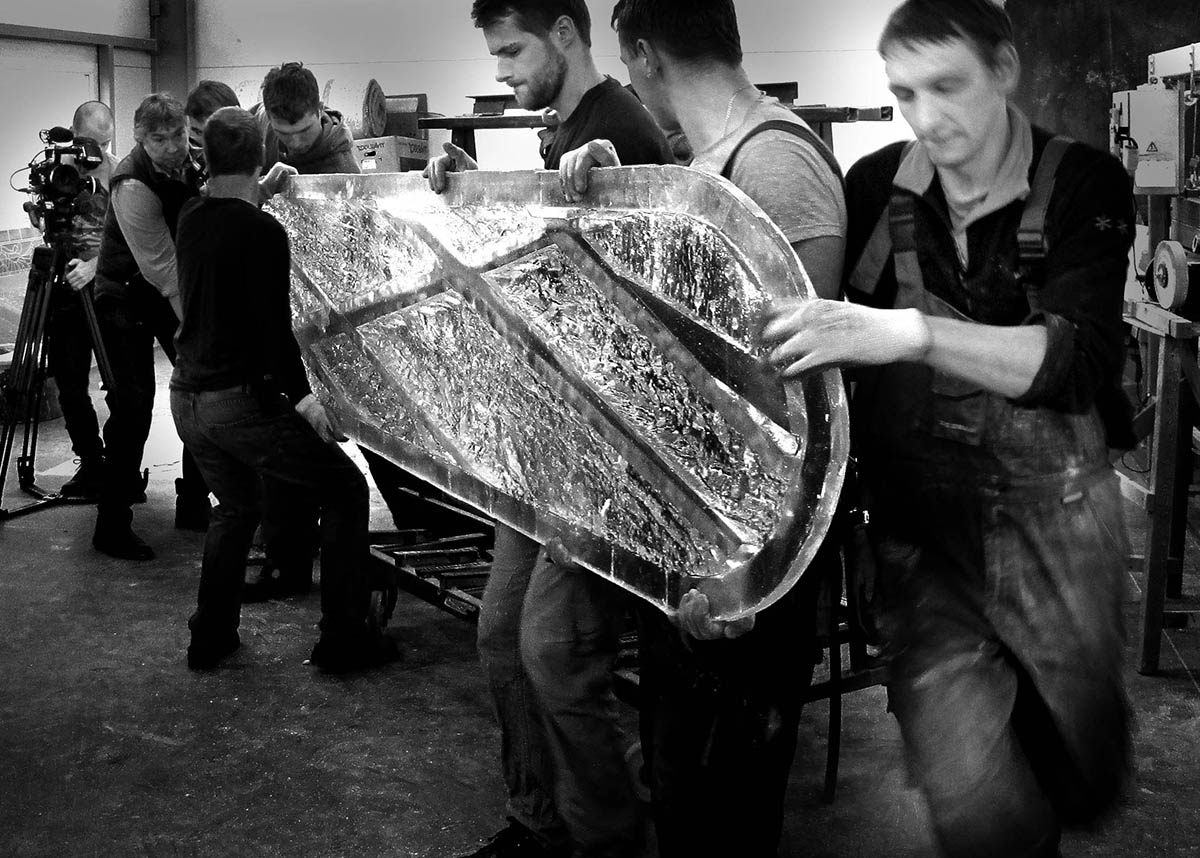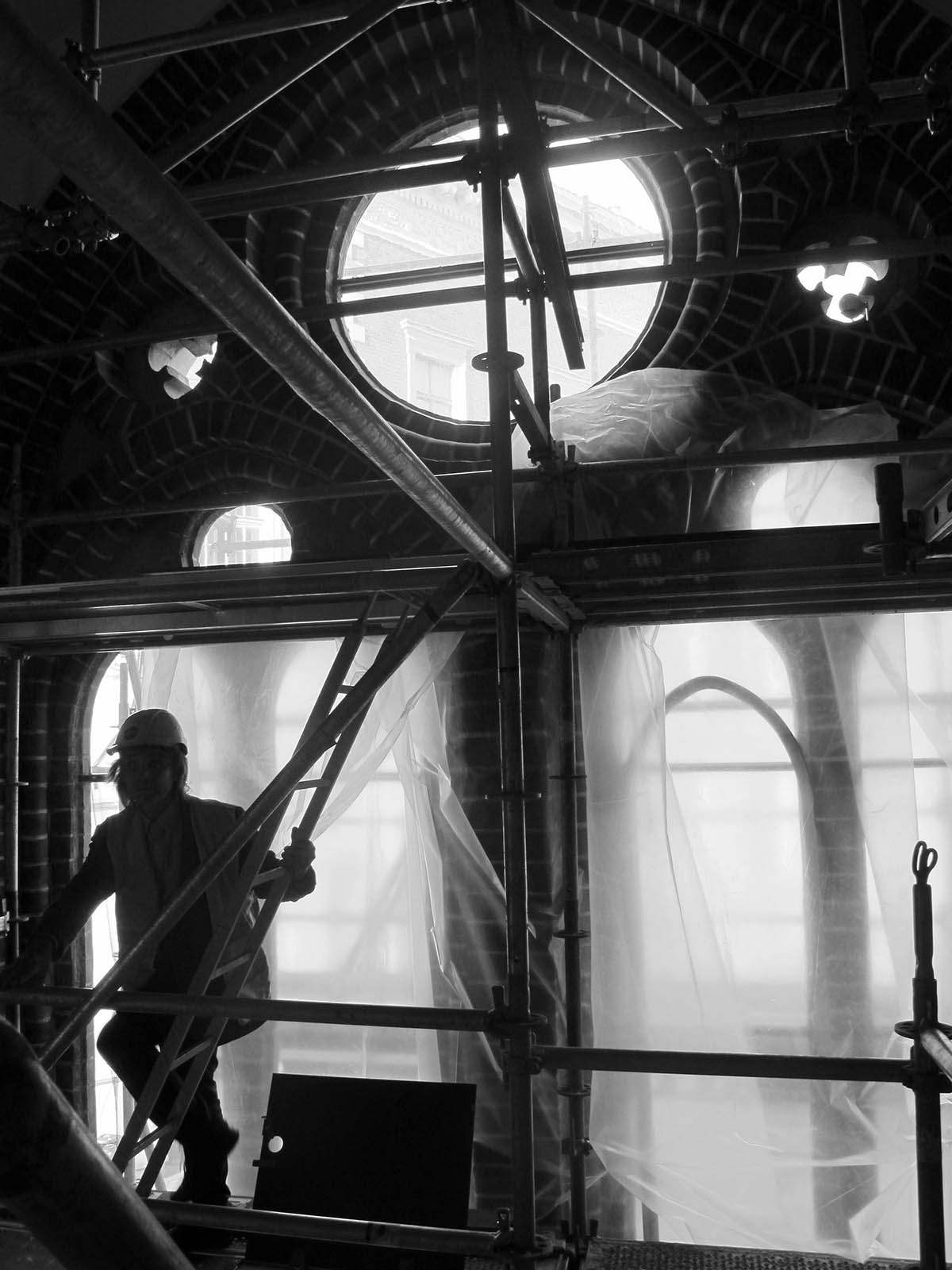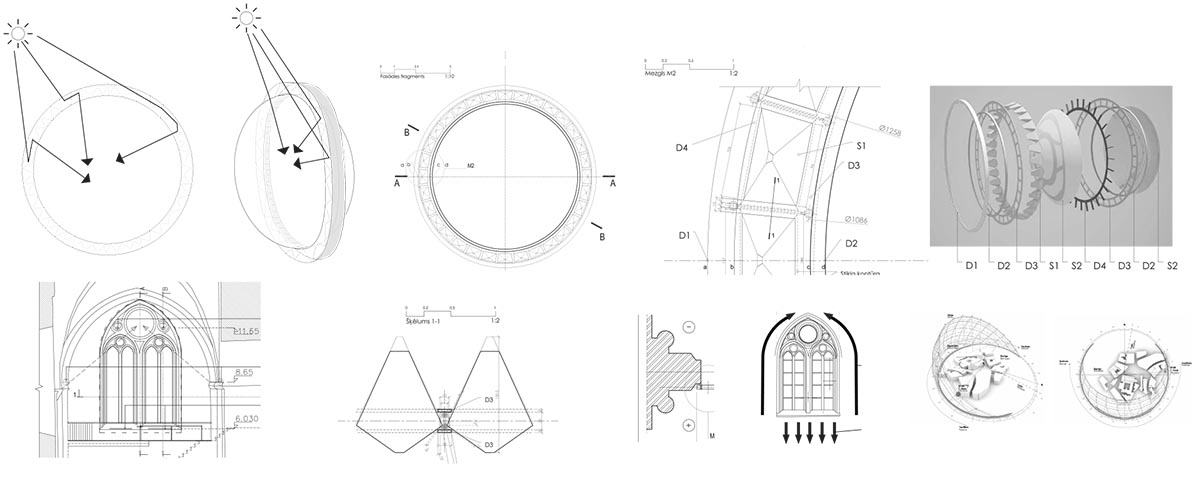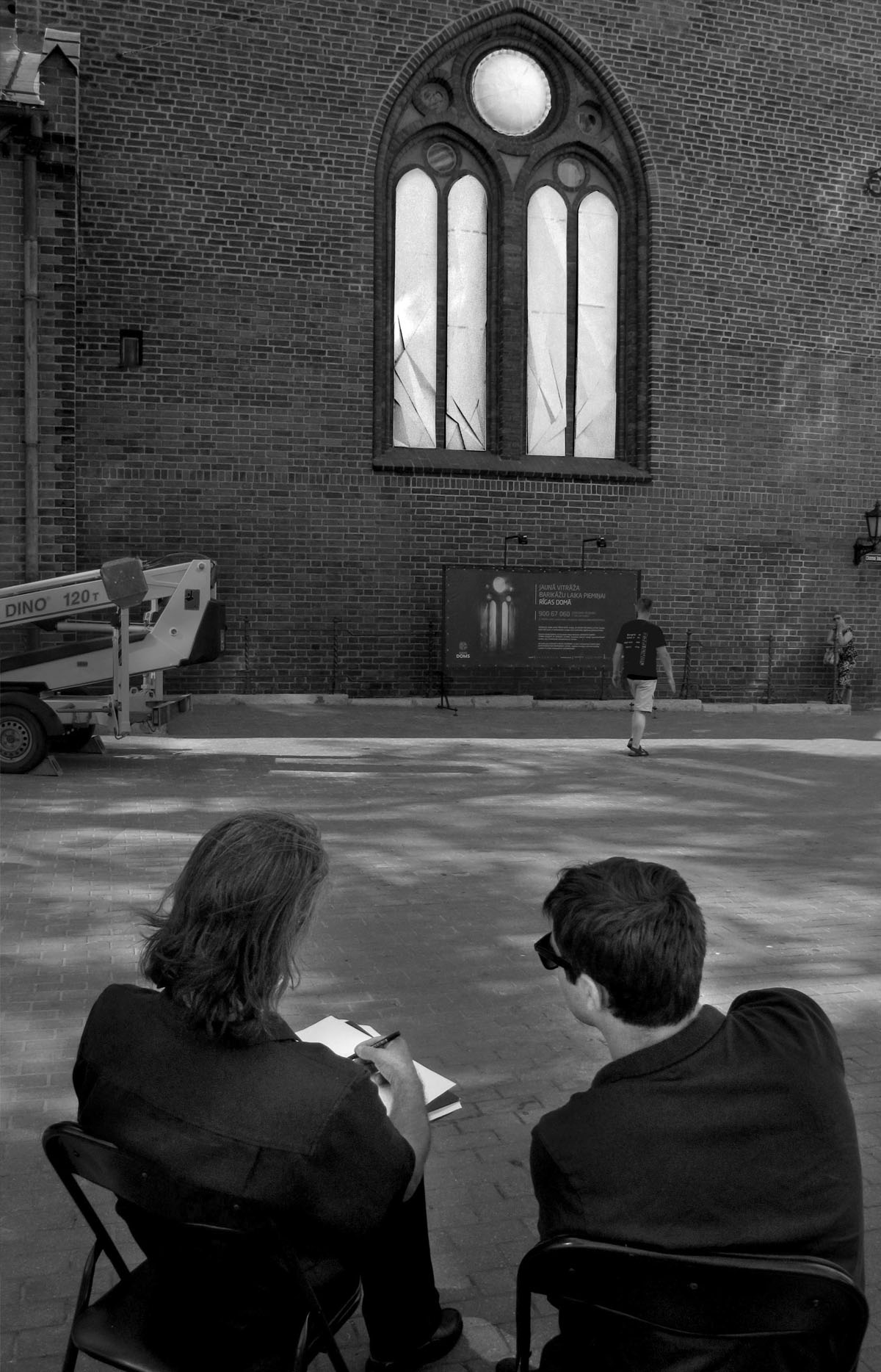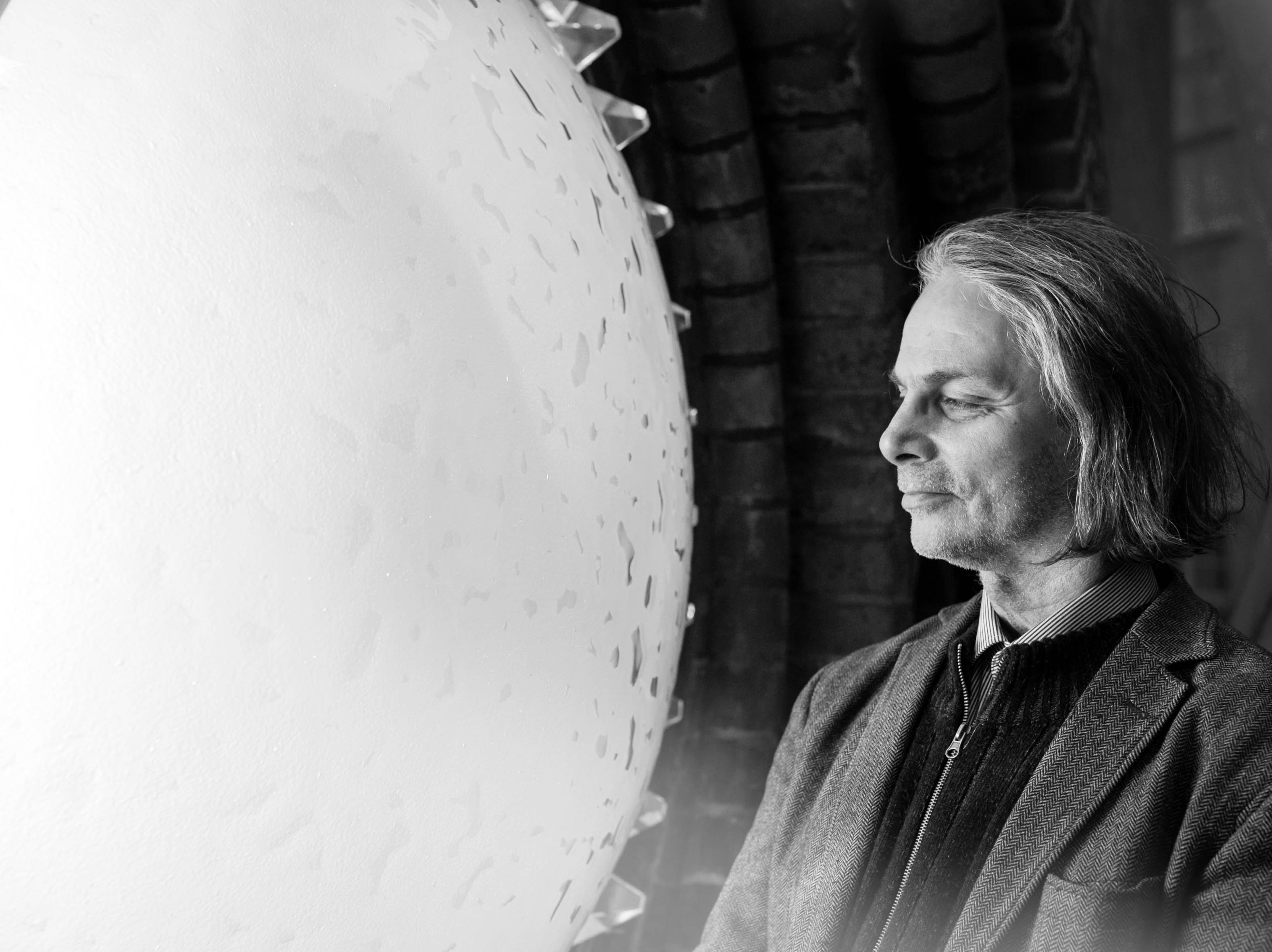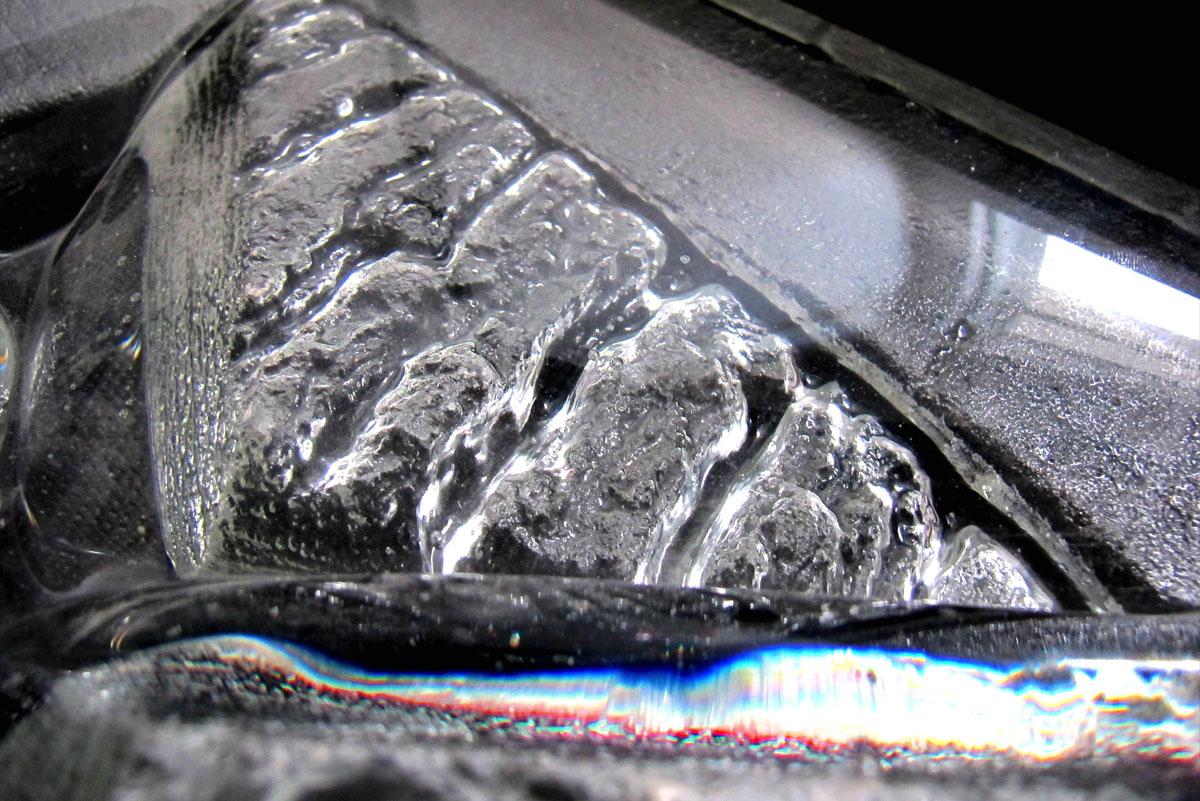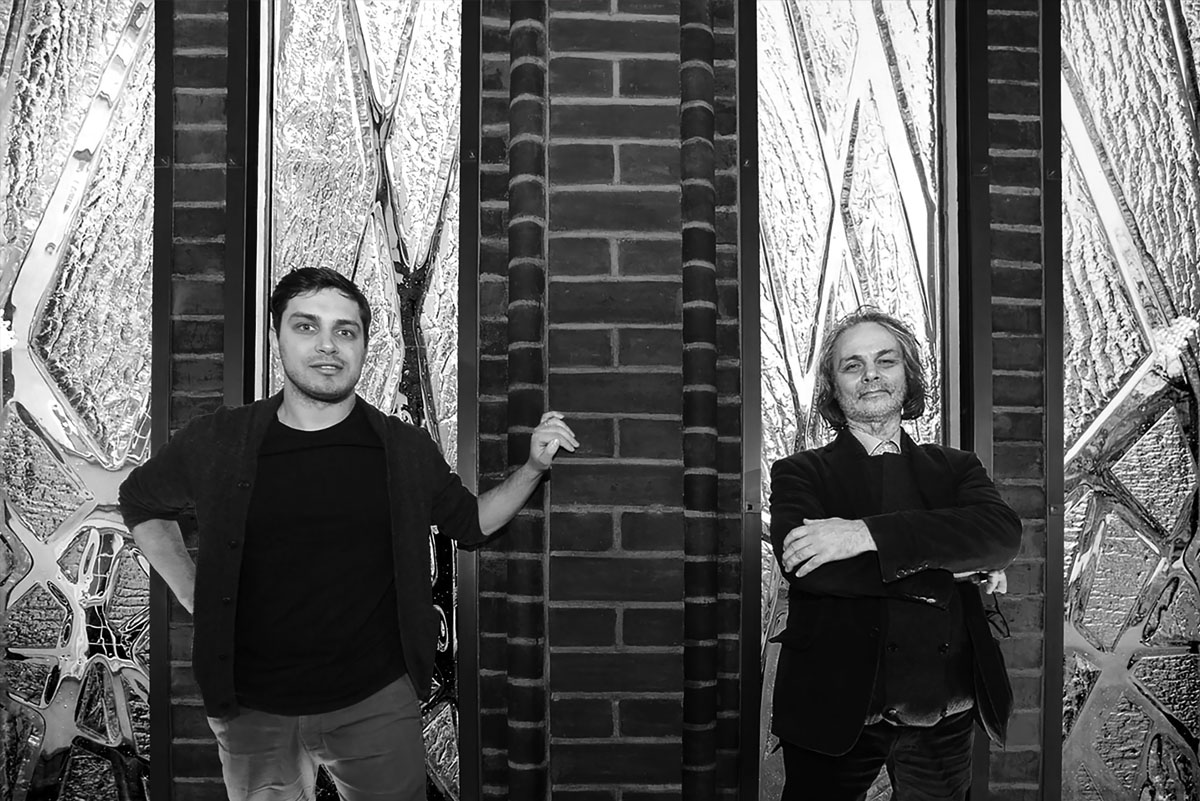A MEMORIAL SIGN OF THE RESTORATION OF LATVIAN INDEPENDENCE
RIGA CATHEDRAL’S NEW STAINED GLASS
RIGA, LATVIA
2018
This work of art is a unique sculptural glass object. It is 7 metres high, of which 4.6 m is comprised of a glass cast that has been inserted into one of Riga Cathedral’s windows and whose appearance varies depending on its exposure to sunlight or the perspective of the viewer.
The artists gave a semiotic meaning to each of the existing window columns in the Chapel of Mary, which form a uniform composition. The composition is based on a continually flickering flame. The four vertical window panes symbolize Latvia’s historical regions that are arranged according to their geographical position, viewed from the outside from the left: Latgale, Vidzeme, Zemgale and Kurzeme. Positioned above them are “The Founded Country” and “The Renewed Country”; “Christmas” and “Easter”. At the centre of the composition is an orb “Completeness”, which symbolises God.
Flames
The geometry of the flames is created by joining the symbols in the work of art in an upward ascent towards the centre, towards “Abundance”. The stylized flames symbolically depict the flames of the bonfires, which were not only crucial to the survival of the defenders of freedom during the freezing January days of 1991, but also united them.
Alongside the lines of the flames, bonfire sparks are poured into the glass. Over 2 million of these tiny sparks symbolize Latvia’s population, including Latvians living in exile. These are dedicated to everyone who has directly or indirectly been involved in the creation of the Free State, alluding to the importance of each individual in creating a single whole. In turn, the larger sparks (polished drops) symbolise the combatants who lost their lives in the name of the independent State of Latvia, including the souls of those who died during the Barricade action.
Integrated into the flames are impressions of bark from living trees from the lime trees and oaks of Latvia’s historical regions, which symbolize feminine and masculine strength in Latvian folklore. Utmost deliberation has gone into the choice of each impression and its integration into the work of art, taking composition, texture, direction, networking and relief into account.
Independence
Independence is a symbol of Statehood that is depicted in the form of stars, hovering over the flames and facing upwards towards Completeness.
Christmas / Easter
These symbols are based on the geometrical form of the existing windows. They are comprised of three circles that symbolize the Holy Trinity (God the Father, God the Son and the Holy Spirit). Crossing at their centre, these circles form a lily blossom, which is synonymous with faith, purity and the resurrection. These are the only symbols that are created from coloured glass, and their colours conform to the church canons. The point depicted at the heart of Christmas symbolizes birth, while the cross at the centre of Easter symbolizes resurrection.
Completeness
Completeness is the centre of the composition, which the symbols of the rest of the work of art converge towards. The orb is pure and clear, while the visual image is formed by the light from within.
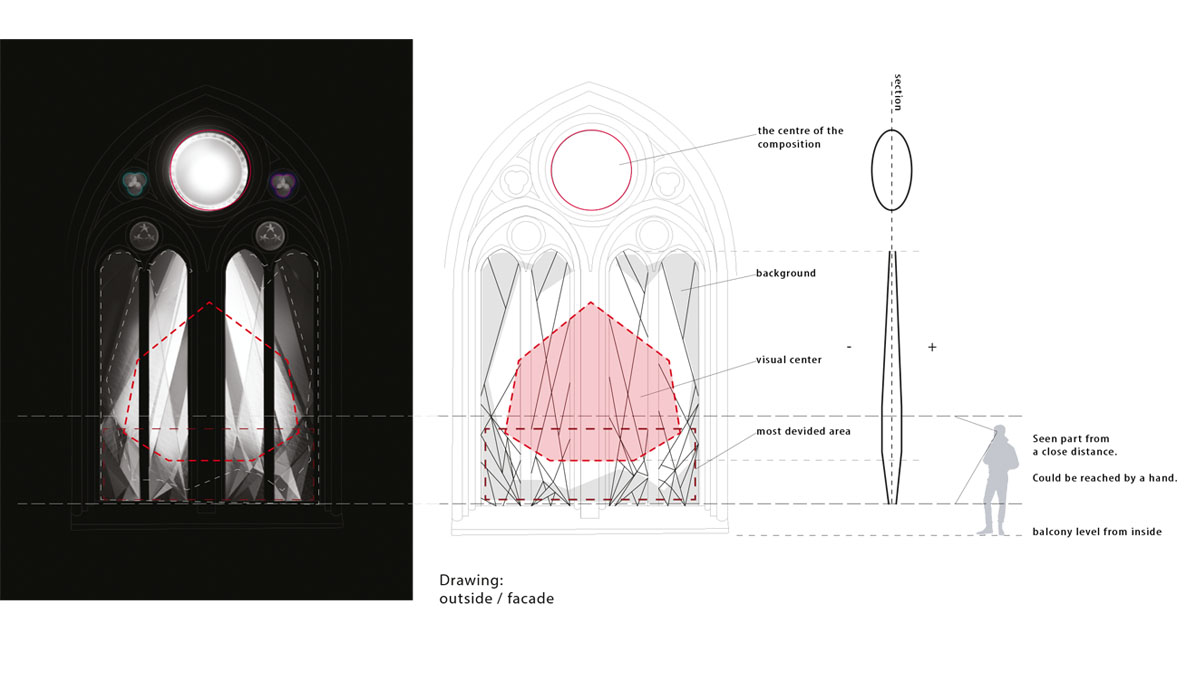 Spatiality. The view from outside and outside.
Spatiality. The view from outside and outside.
From the very start of the project, it was decided that it would have to be possible for the new work of art to be viewed from both inside and outside the church. The work of art has been created as a three-dimensional sculpture – a sculptural work of art which reflects sunlight. The work of art can be viewed by both visitors to the church and every passer-by crossing Cathedral Square. This distinguishes this memorial from other classical stained-glass windows, which can mainly only be viewed from the inside of churches and cannot be appreciated from the outside. The visual effects of the work of art are influenced by surrounding circumstances, the building nearby, the movement of people, the angle from which the window is viewed, weather conditions and the rhythms of the sun. The work of art is alive and is in a state of continual change.
Viewing angles and distances
The work of art has been designed in accordance with the various viewing angles possible and distances, which have a bearing on its composition and nuances: the viewing distance and angle from Cathedral Square; the view outside the Chapel of Mary; the view inside the cathedral and the view from the balcony of the Chapel of Mary, in close proximity to the window.
Natural lighting
Natural lighting was extremely important to the authors. As sunlight changes, so changes the intensity and colour of reflected light.
“We spent a lot of time studying the impact of natural light on the location, as well as how to control and utilize it in the work of art. In addition, we studied the impact of sunlight on the specific window, along with how light changes and the angle of light in the morning and evening, how seasons affect movement and how this can be used in the work of art,” says Dzintars Zilgalvis.
Mutability
Every time one looks at the stained-glass window from both the inside and outside, it is a unique experience, because as the angle and intensity of the source of light change, so do the light and colour reflected by the stained-glass window. The colour gamma is also influenced by surrounding circumstances: houses, human traffic and weather conditions, etc.
Colour
The work of art is not coloured in the manner of other traditional stained-glass windows. However, colour is in itself an integral part of the work. The sculpture is like a diamond in that it is transparent, incorporates the full spectrum of colours, without highlighting any particular colour. The gamma of colours is also influenced by the surrounding conditions: buildings, human traffic and weather conditions, etc.
Artificial light
Artificial light is a component of the work of art that is intended for the hours of darkness, especially in winter, when the availability of the sun in this region is very limited. Several lighting regimes have been installed for the work of art, ensuring a special mode of lighting for special dates and times such as Christmas or on the anniversary of the opposition movement. The lighting is installed inside the Chapel of Mary, with the intention that as technologies develop in future, it can be easily upgraded or adapted to take advantage of the relevant opportunities.
PROCESS
In creating interdisciplinary works of art, artist and architect Krišs Zilgalvis and artist Dzintars Zilgalvis combine various artistic directions, science, engineering, architecture and cutting edge technologies. A characteristic element of both artists’ approach to the creation of works of art is the process, which incorporates various professional directions and media.
According to Dzintars Zilgalvis, “The process is just as important to us as the end result.” This is the approach, which both artists typically use in their creative work. In this instance too, the team chosen by Krišs Zilgalvis and Dzintars Zilgalvis to execute the project was comprised of various specialists from different professional fields: architects, lighting engineers, façade engineers, materials researchers, materials manufacturers, historians, thermal energy specialists and many others. Both artists were involved in the execution of the project from the first sketch through to the assembly of the work of art; from research into materials through to the development of the technical project. This approach is also reflected in their other works of art.
Research process
The memorial is not a classic stained-glass window, but a work of art that, in a technical sense, is the first of its kind. Accordingly, it was up to the creative team to develop and create their technology in order to realise the concept. As Giulio Antonutto, Arup Associate Director stresses, “Nowadays, such a special approach is a rarity, because construction is regulated by rigid standards, with the result that everything happens quickly and relatively. Therefore, this is a unique installation, which required the application of special skills and imagination on the part of the artists, and obliged them to place their trust in the recommendations of specialists.” Built in the 13th century, the cathedral is an architectural and engineering masterpiece, exemplifying the very latest approaches and knowledge of the day. In creating the work of art, the team, used cutting-edge technology as an instrument, along with traditional technical approaches, combining 21st century and ancient traditions. For the artists, it was important that the material, technology and approaches were only instruments with which to the express the idea. During the project research process, the team considered the possible materials and application of technologies, starting with transparent concrete, as well as materials filled with special fluids, whose visual effect is influenced by air temperature and the intensity of light, with the stipulation that the work of art must not lose its initial artistic and technical qualities over the course of time.
Model 1:1
In light of the project’s unique context, it was decided to emphasise glass as the main material. At the preparatory stage, research was conducted into the technical condition of the cathedral, including the state of the building’s foundations and walls. Surveillance of tiny cracks was conducted in order to promptly find technical solutions as and where necessary.
Completeness. The orb is surrounded by 32 polished and specially-formed glass diamonds, which reflect light on the inside of “Completeness”.
The artists wanted to create the large windows from individual glass casts, whose composition and upward direction are not interrupted by horizontal lead cames. Therefore, the existing cames were removed from the large windows. Installed in their place was a single frame for each of the four columns. Together with the glass manufacturers, the artists conducted countless tests and experiments to meet the authors’ specifications. Samples were prepared, each of which had a special significance. Their tasks included ascertaining the clarity of the material, other reflective properties, and recording the visual effect of the glass in relation to the proportions and rhythm of the existing wall bricks, as well as many other aspects. The technical properties of the glass, including its durability, were tried and tested separately.
The flames.
To prepare the biggest glass objects: the four lower verticals, it was necessary to adapt special kilns to prepare 4.6m high textured glass objects. Bearing in mind the glass relief, a complicated task was to ensure a consistent temperature in the kilns. The process of adapting equipment through to preparing samples required 18 months of research. “Abundance” was designed as a spatial orb with a diameter of 120 centimetres.
Context
About the slogan for the work of art and the formation of its contents:
“Chatting to people around me about the events of that period, while some accented the sense of unity, there were those who remembered the feeling of uncertainty, and others whose first recollection was of the bonfires and barricades. What united them all was their shared passion for a free Latvia, optimistic thoughts about the future and fervent hope,” explains Krišs Zilgalvis.
According to Dzintars Zilgalvis, “With fervour for a free Latvia” is a dedication to the independence of the Latvian State and a symbol of our collective memory. Parallel to living memories of past events, it communicates the people’s undying hope and dream of a free Latvia. This memorial is a reminder of historical events, a dedication to the defenders of freedom and future generations of inhabitants of the Free Latvia State.”
Latvia
Latvia is one of the Baltic States located on the eastern shore of the Baltic Sea in Northern Europe. In 1918, after the end of the First World War, Latvia declared itself to be an independent republic. However, its independence proved to be short-lived. It was occupied in 1940. Just over five decades later, a sustained campaign of non-violent opposition culminated in Latvia regaining her independence in 1991. The Passion for a Free Latvia is a memorial dedicated to the independence of the Latvian State and to the struggle of its people for freedom.
Riga Cathedral and Square
The cathedral of the Archbishop of Riga and Latvia has been included on the UNESCO World Heritage List. Its tower rises over the historical city centre and highlights the silhouette of the capital. Riga Cathedral’s foundation stone was laid in 1211. This ancient building has been a witness to wars, changes in political regimes, the securing of the independence of the Latvian State and the restoration of her independence. The Cathedral is an important cultural-historical monument, which has preserved Latvia’s historical and cultural testimonies from various ages. The memorial The Passion for a Free Latvia is the first commemoration in Riga Cathedral dedicated to the independent Latvian State and its residents.
Regaining Latvia’s Freedom and the Cathedral
The Cathedral Square is the most important space in the historical centre of the city. During the opposition protests of 1991, in order to protect the newly restored independence of the Republic of Latvia from enemy forces, Latvia’s inhabitants built barricades. The Old Town was home to the new established country’s parliament, the Saeima, government buildings, and Latvian Radio. During this period, Cathedral Square became the main gathering point for those seeking to defend Latvia’s newly-won independence. Bonfires were built and burned to protect the nation’s defenders from the winter cold, where those ready to defend their country sought warmth.
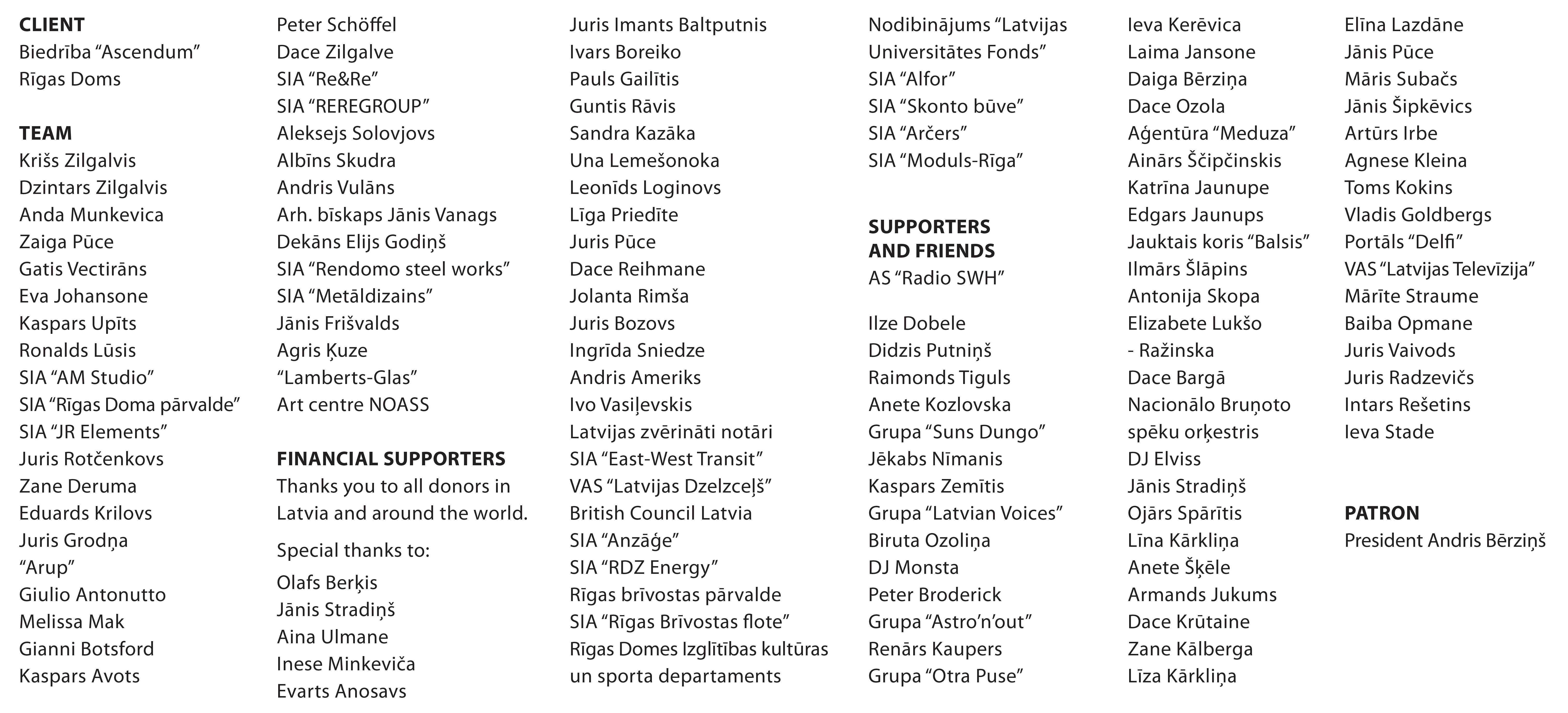
More info about the project and team:
https://satori.lv/article/barikadem-30-isfilma-ar-degsmi-par-brivu-latviju
Website uses publicity materials from NOASS, ASCENDUM, personal archive and other friends.
